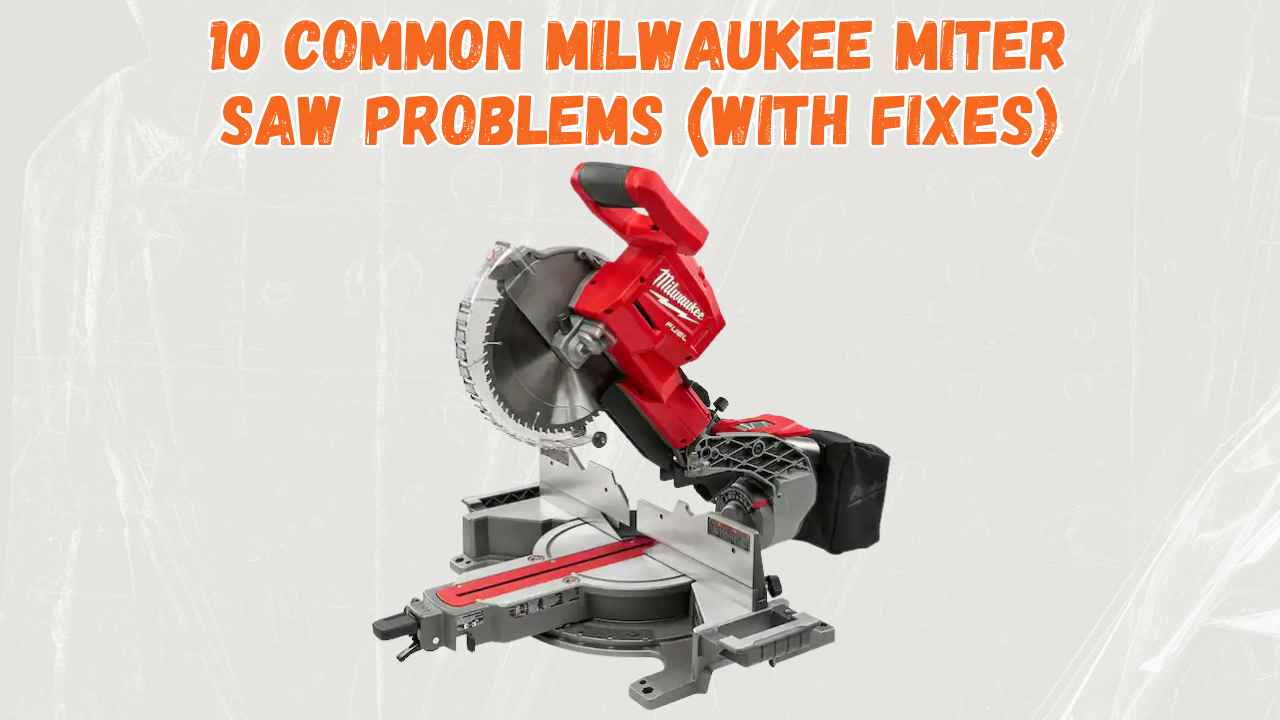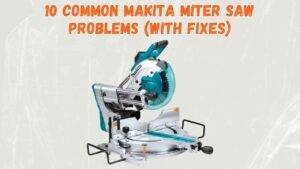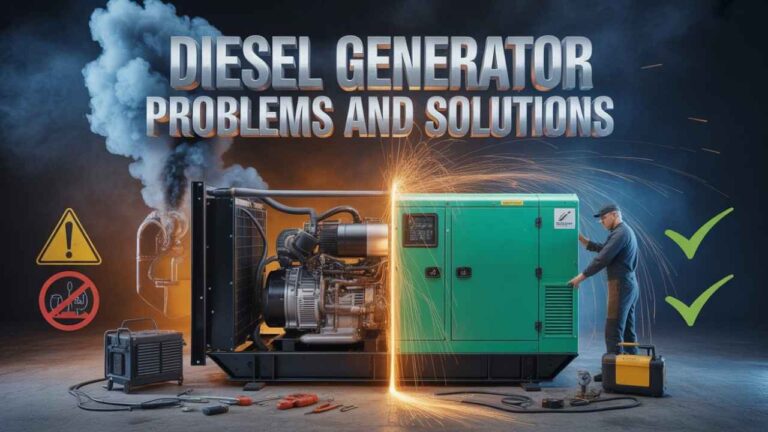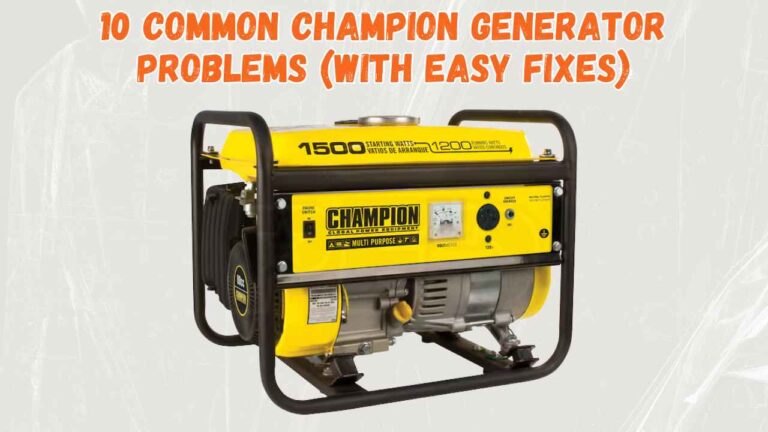Struggling with your Milwaukee miter saw? You’re not alone!
From cutting issues to motor hiccups, these tools can face common problems that leave you frustrated.
But don’t worry we’ve got you covered. Discover 10 common Milwaukee miter saw problems and their simple fixes to get your saw back in action and your projects on track.
Milwaukee Miter Saw Problems (Short Overview)
Milwaukee miter saws are reliable tools, but like any equipment, they can face issues such as inaccurate cuts, motor problems, or blade alignment troubles.
Regular maintenance, proper calibration, and using the right blade can help resolve these problems quickly.
Stay proactive to keep your saw running smoothly!!
Read 10 Common Problems With Fixes In Easy Ways…

1. Blade Misalignment
Blade misalignment is a common issue with Milwaukee miter saws and can lead to inaccurate cuts, ruining your projects.
Causes:
- Loose blade or fence alignment
- Over time, saw components may shift due to vibrations
Fixes:
- Check the blade and fence alignment using a square and tighten any loose parts.
- Adjust the saw’s settings according to the user manual to ensure precise calibration.
2. Motor Overheating
One common issue with Milwaukee miter saws is motor overheating, which can lead to reduced performance or even damage if not addressed promptly.
Causes
- Extended use without breaks
- Blocked vents restricting airflow
- Accumulation of dust and debris in the motor
Fixes
- Allow the saw to cool down between uses
- Regularly clean vents and motor components to ensure proper airflow
- Avoid overloading the saw with tasks beyond its capacity
3. Power Loss
If your Milwaukee miter saw is experiencing power loss, it can disrupt your work and slow down progress.
Causes:
- Worn carbon brushes
- Damaged or loose power cord
- Overheating or motor overload
Fixes:
- Replace the carbon brushes if they’re worn out.
- Inspect and repair or replace the power cord if damaged.
- Allow the motor to cool down and avoid overloading the saw during use.
4. Dust Collection Issues
Dust buildup is a common issue with Milwaukee miter saws, often leading to messy workspaces and reduced efficiency.
Causes:
- Inefficient dust port design
- Blocked or clogged dust chute
- Poor compatibility with external vacuums
Fixes:
- Regularly clean the dust chute to prevent blockages
- Use a compatible vacuum or dust extractor for better performance
- Consider upgrading to a high-quality dust collection attachment.
Read Also:
Makita miter saw problems
5. Fence Misadjustment
A misaligned fence is a common issue with Milwaukee miter saws, often causing inaccurate cuts and poor finish quality.
Causes
- Loose screws or bolts holding the fence in place.
- Regular wear and tear causing the fence to shift over time.
- Improper setup during initial assembly.
Fixes
- Check and tighten all screws and bolts securing the fence.
- Use a square to align the fence perfectly with the blade.
- Regularly inspect the fence alignment and make small adjustments as needed to maintain accuracy.
6. Bevel Lock Failure
A common issue with Milwaukee miter saws is bevel lock failure, where the saw’s bevel adjustment doesn’t hold properly.
This can make it frustrating to achieve precise cuts and may disrupt your workflow.
Causes
- Loose or worn-out bevel lock mechanisms
- Over-tightening during adjustments
- Lack of proper maintenance
Fixes
- Check and tighten the bevel lock screw securely
- Replace damaged or faulty parts if needed
- Regularly clean and lubricate the locking system to avoid stiffness
7. Loud Noises
If your Milwaukee miter saw is making loud or unusual noises, it could indicate a problem that needs attention.
These sounds often signal an issue with the internal components or improper maintenance, which may affect the tool’s performance.
Causes
- Worn-out bearings
- Loose or damaged blades
- Debris stuck in the motor or housing
Fixes
- Inspect and replace worn-out bearings.
- Tighten or replace the blade if necessary.
- Clean the motor and housing to remove any debris.
8. Trigger Malfunction
One common issue with Milwaukee miter saws is a trigger malfunction, which can prevent the saw from starting or stopping properly.
Causes:
- Dust and debris clogging the trigger
- Faulty wiring connections
- Worn-out trigger components
Fixes:
- Clean the trigger area thoroughly to remove dust and debris
- Inspect and repair any damaged wiring
- Replace the trigger mechanism if it’s excessively worn or damaged
9. Uneven Cutting
Uneven cuts are a common issue with Milwaukee miter saws and can disrupt your project’s precision.
Causes
- Blade misalignment
- Loose or unstable workpiece
- Dull or damaged blade
Fixes
- Check and realign the blade using the manufacturer’s guide.
- Secure your workpiece firmly before cutting to prevent shifting.
- Replace or sharpen the blade if it’s worn out. Regular maintenance can also help ensure clean and precise cuts.
10. Blade Wobble
One common issue with Milwaukee miter saws is blade wobble, which can affect the accuracy of your cuts and lead to frustration during projects.
Causes
Blade wobble is usually caused by a loose arbor bolt, a damaged blade, or even debris caught between the blade and the mounting surface.
Poor maintenance or overuse can also contribute to this issue.
Fixes
To fix blade wobble, start by tightening the arbor bolt securely. If the problem persists, inspect the blade for damages or warping and replace it if necessary.
Make sure the blade is installed correctly and that all parts are clean and aligned.
FAQs
How do I adjust the bevel angle on a Milwaukee miter saw?
To adjust the bevel angle, unlock the bevel lock lever, tilt the saw to the desired angle on the bevel scale, and securely lock the lever in place.
What blade size does a Milwaukee miter saw use?
Most Milwaukee miter saws use either a 10-inch or 12-inch blade. Check the model specifications to confirm the exact blade size.
How do I clean my Milwaukee miter saw?
Turn off and unplug the saw before cleaning. Use a soft brush to remove dust and debris from the blade, guard, and vents. Avoid using water on electrical components.
Can I use a Milwaukee miter saw for cutting metal?
Yes, but only with the proper metal-cutting blade. Ensure the blade is compatible with your materials and follow all safety guidelines when cutting metal.






[…] 10 Common Milwaukee Miter Saw Problems (With Fixes) […]